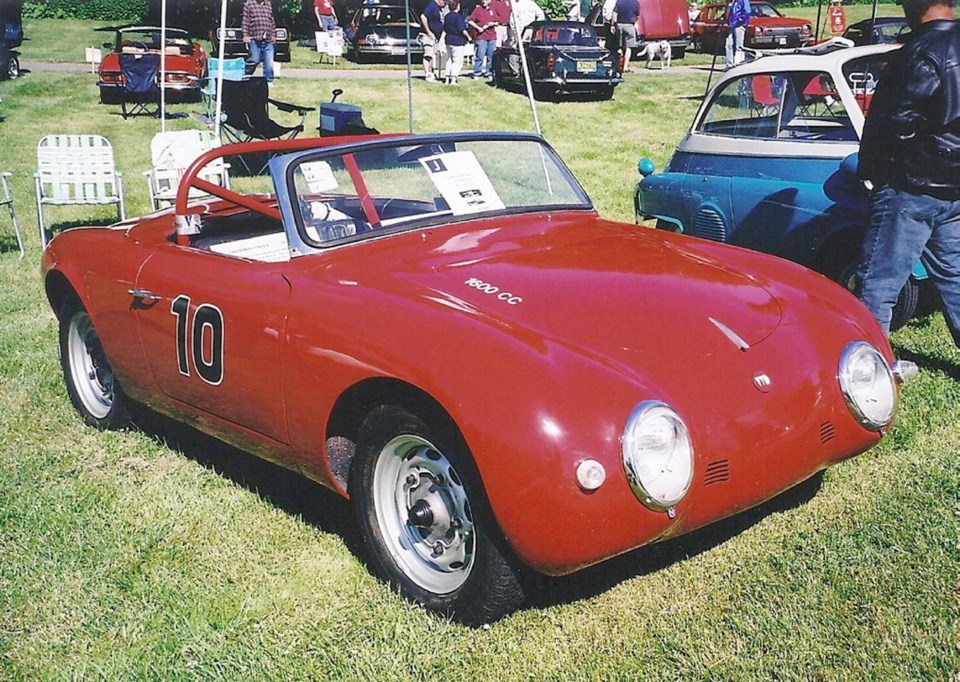Since the arrival of the automobile, men have dreamed of making and marketing a car bearing their name. Some, like Henry Ford, the Packard brothers, Dodge brothers and Soichiro Honda were successful. Most slipped into history, some after building only one prototype.
Our subject is an Austrian entrepreneur and race driver named Wolfgang Denzel who also wanted his own car company. His story started much like the father-and-son team of Ferdinand and Ferry Porsche. Both began after the Second World War and based their cars on components from the Volkswagen Beetle.
While the Porsches developed their first Porsche in an old sawmill in the tiny village of Gmund, Austria, Denzel was creating his car in a Vienna shop. The Porsches had an advantage because Ferdinand Porsche’s engineering consultancy had designed the Volkswagen for the German government in the 1930s.
The Porsches and Denzel were not alone in this pursuit. Other German racers such as Walter Glockler and Petermax Muller were building and racing VW-based cars with streamlined bodies.
As the Austrian distributor for BMW products, Vienna-based Denzel was well connected in the automobile industry. He began creating his Beetle-based car after the Second World War.
After some experimenting, Denzel formed the Vienna-based Denzel Automobile Co. in the early 1950s. He modified VW engines with parts such as twin carburetors and special camshafts, making them much more powerful than the original.
He installed these in special lightweight, aerodynamic steel or aluminum bodies mounted on a frame constructed of both round and square tubes. The Porsche had a VW-type platform frame.
As in the VW and production Porsche, Denzel’s engine was behind the rear axle. Suspension was Volkswagen with front trailing arms and laminated lateral torsion bars, and rear swing axles and solid lateral torsion bars.
By the early 1950s, Denzel was producing little roadsters that could accommodate two passengers, or three in a pinch. Originally called the WD, later changed to Denzel, the aerodynamic body bore some resemblance to the Porsche. But being 305 millimetres shorter made it look stubbier, and the close-set headlamps were an immediate identifier.
Whereas Porsches were designed as small luxury cars aimed at more affluent sports-car buyers, Denzels were slanted to competition enthusiasts who were likely to race them. Although Porsche did well in racing, it still managed to exude an aura of upscale appeal. The competition Porsche 550 Spyders that began appearing in 1954 were closer to the Denzel in philosophy.
In the quest for performance, Denzel made his car light and so tightly drawn that after accommodating the fuel tank and spare tire, there was no trunk space.
Lightness paid off in performance, and to the surprise of almost everyone, a Denzel won the famously difficult Alpine Rally in 1954. It was a significant achievement for such a small company and brought wonderful publicity. Denzels won other competitions, and it quickly established itself as a marque to be reckoned with.
As Denzel developed his car, he moved further away from VW components. While the basic layout remained the same, he was soon fabricating his own components such as pistons, manifolds and even crankshafts for the air-cooled flat four. Denzels were also occasionally fitted with Porsche engines.
Although Denzel production was never high, a few found their way to North America. In 1957, Road & Track tested a 1.3-litre 1300 model (they came as 1300 or 1500 depending on displacement) and recorded some impressive performance figures for a small sports car.
They reported zero to 100 km/h times of 13.7 seconds and a top speed of 159 km/h for the 642-kilogram roadster. The testers were impressed enough to call it “one of the best all-round dual-purpose machines we have ever found.”
The little 1.3-litre Denzel produced 65 horsepower, almost double the Beetle’s 36. The test car had a four-speed, non-synchromesh “crash box” transmission, although synchromesh was available. Denzel offered a variety of gear ratios.
The testers noted that the Denzel engine didn’t produce much power below 3,500 rpm, and revved to over 6,000, far beyond the Beetle engine’s capability.
By the late 1950s, Denzel realized that he could not compete with the engineering prowess of Porsche or its financial success and close association with Volkswagen. He stopped producing cars in 1959 after building about 300 of his little roadsters.
Denzel went on to build a successful European car-dealership chain. As a member of BMW’s board of directors, he is said to have rescued financially distressed BMW by voting against amalgamating with Daimler-Benz. He went on to consolidate its survival by designing the very successful, small, unit-construction, rear-engine, air-cooled BMW 700 model of the 1960s.



